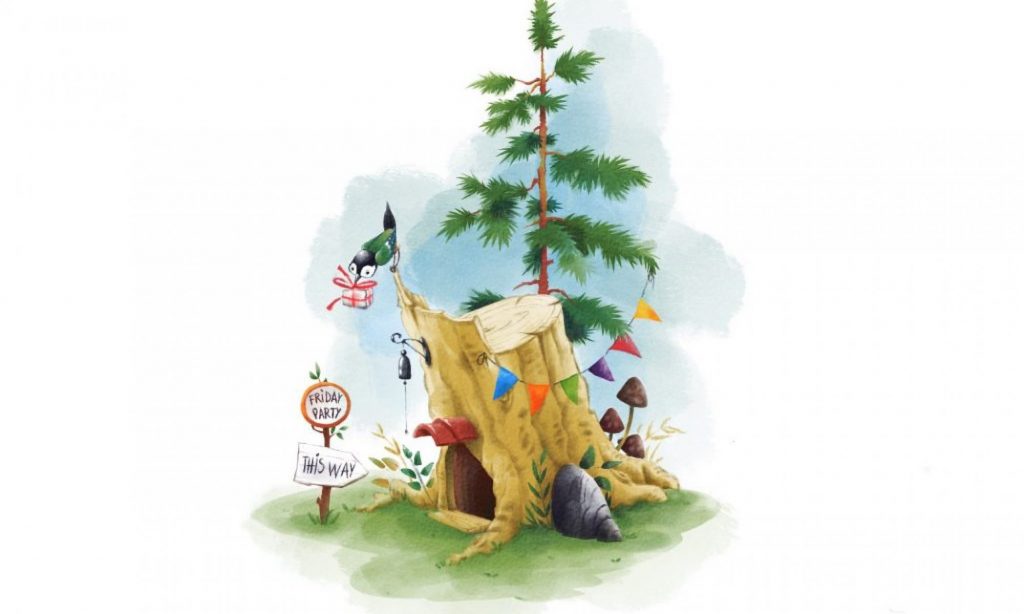The personal reflections on Children Society project.

I should admit, I failed. I failed to finish the Children Society (CS) project on time of the deadline. Not even half of the film is completed.
Well, I thought a lot lately about why this has happened and what I’ve learned during this project.
When we went for summer holidays, the project was in the pre-animation stage. Storyboards and animatic were finished, and I could start to animate it. What I actually did. I helped Kat with her graduation film at that time and began to work on CS film a bit. So, why I didn’t manage to finish the film on time?
First and foremost, I didn’t know my capabilities. In other words, the lack of experience to plan this type of work. I knew that I could do that quality of animation, but didn’t realise how much time it would take, though. Although I saw the first sights of how complicated my planned animations are, I didn’t pay attention. And even decided to take a break of animating at the end of August and September.
I learned Maya, sketched a lot, painted, studied storyboarding, watched shorts and attended online webinars, conferences and animation festivals. Even got a chance to visit some exhibitions, like Kimono: Kyoto to Catwalk (wanted to see how Japanese depict and simplify flowers shapes in their art) in Victoria and Albert Museum, Among the Trees in Hayward Gallery and Andy Warhol in Tate Modern. Additionally, I thought about to make changes in the Children Society film style by adding the real flowers instead of drawn ones. So, I took a lot of photos at that time.
Now I see if I would proceed work on the CS project during these months, I could finish it indeed, even with this complicated animation quality. Or might be I would reach one of the tutors to get a piece of advice to find out how I can simplify my animation in that early stage.

Thus, the lack of proper planning and experience was a critical problem during film production. Accordingly, I’m going to make everything to avoid these mistakes in my graduation film.
Also, another obstacle was that I chose to do animation in Toon Boom Harmony instead of TV Paint. At that time, this software was only slightly explored by me, I just watched a couple of tutorials. However, I knew that Toon Boom is one of the major soft in the animation industry. Therefore I decided to do the film in this programme simultaneously learning it. So, animating took more time than usual for me. Simply because I spend a lot of time watching online tutorials and exploring all different ways to work with Toon Boom and which one works best in my case at the same time.
Although it might look like a disruption in work, especially at the beginning, yet, I learned a tone! Really struggled with brushes. Since they are vectorised, it was hard to adapt to drawing after the TV Paint. However, I managed to overcome it. I’m now more familiar with Harmony’s interface, can easily navigate through it. I can use Node View and add Nodes. I learned how to use an integrated sound manager to move, cut and dissolve or increase track’s audio. Also, I clearly see the advantages of working with Toon Boom. It is like a combination of TV Paint for 2D animation, plus Adobe Animate for cut-outs and Adobe After Effects for VFX. And this is great! I could make fadings-in and out, transparencies and apply blur effect easy. Add masks and camera movements and many more without switching to AE. Everything can be done in one software.
Clearly, this experiment was worth it. And the best way to learn any software is to make an actual project in it. Furthermore, I’m going to proceed to learn it and currently doing an additional short course.

On the whole, this project was a constant studying experience. I shoot many references, even did a 3D ref in Maya, learned a lot, and tried different ways to animate. Even tutors saw significant progress in my work. Also, not only speaking about the technical side. Besides, I know more about my abilities and weak sides and about my work approach now. Therefore I can avoid these mistakes in my future work.
After all, I want to add that I will work on it bit by bit and hope to finish it this year.
